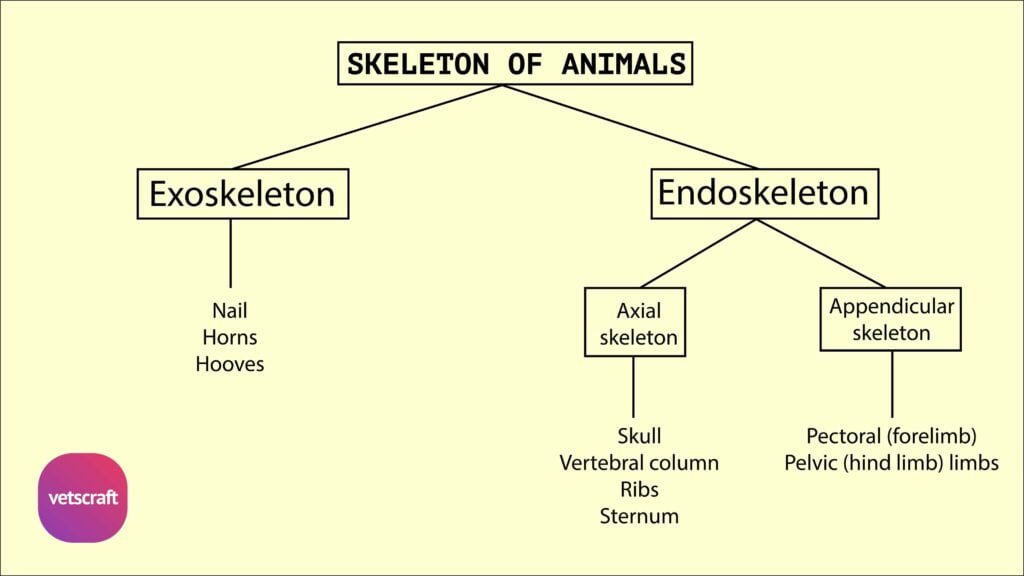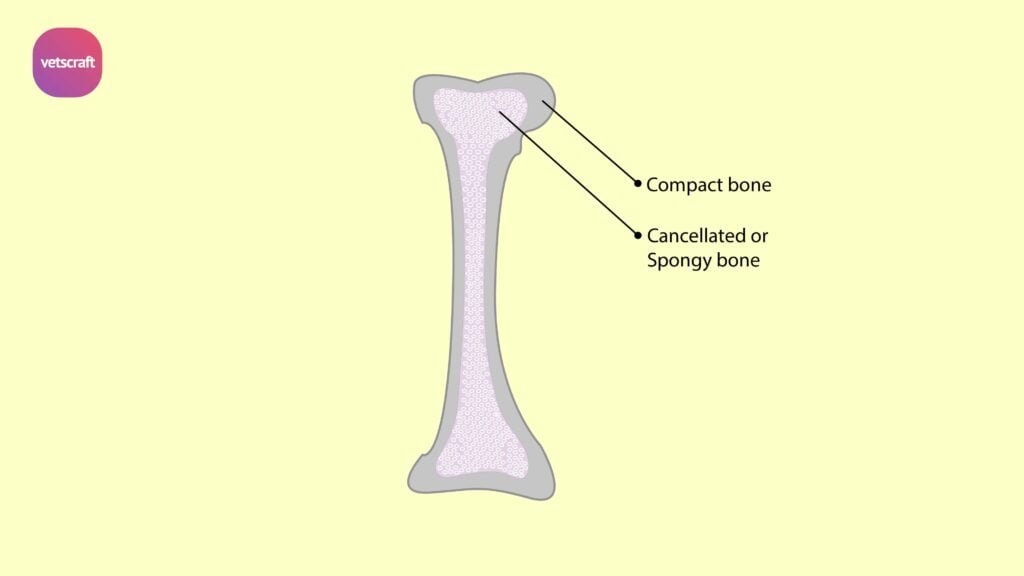TABLE OF CONTENTS
Ox
The cranial cavity encloses the brain with its membranes and blood vessels. The dorsal wall or roof is formed by the body of frontal bone. The lateral wall is formed by the lateral part of parietal and temporal behind and by the orbital plate of frontal and wings of the sphenoid in front. The ventral wall or floor is formed from before backwards by the presphenoid, postsphenoid and basi occipital. The posterior wall is formed above by the posterior parts of parietal and interparietal and below by squamous and lateral parts of occipital. The anterior wall is formed by the cribriform plates of the ethmoid bone

The cranial cavity is divided into three compartments –
- The olfactory compartment lies at the anterior end and it is divided by the crista galli of the ethmoid into two oval olfactory or ethmoidal fossae. They accommodate the olfactory bulbs.
- The cerebral compartment greatly exceeds the other two in size. Its floor is formed by the sphenoids, the roof by the frontal and lateral wall by temporal. The internal occipital protuberance above and laterally the petrosal crests indicate the demarcation between the cerebral compartment and cerebellar compartment behind (to which the tentorium cerebelli is attached).
- The cerebellar compartment is enclosed by the basi occipital below, the squamous parts of the occipital above and behind and literally by petrous parts of petrous temporal bone.
Horse
- The dorsal wall is formed by the frontal, parietal and inter-parietal bones.
- The posterior wall is formed by the squamous and lateral parts of occipital.
Dog
- The boundaries of the cranial cavity are similar to that of the horse.

